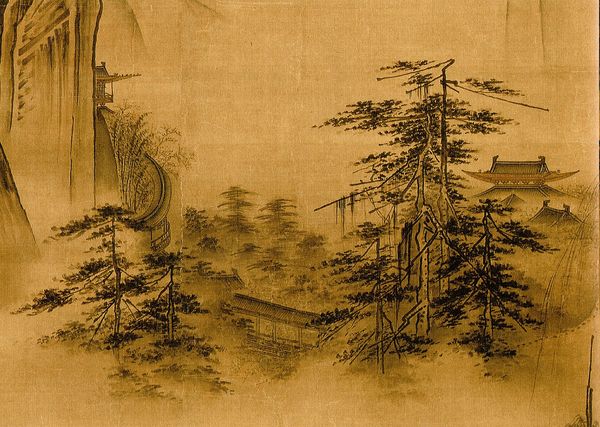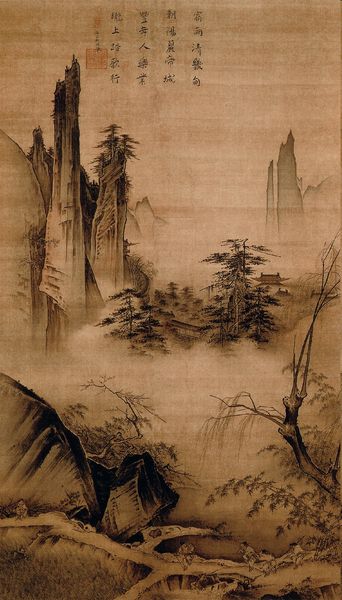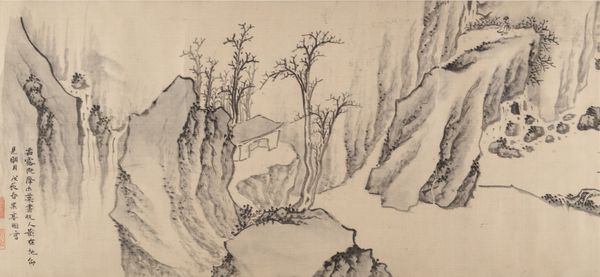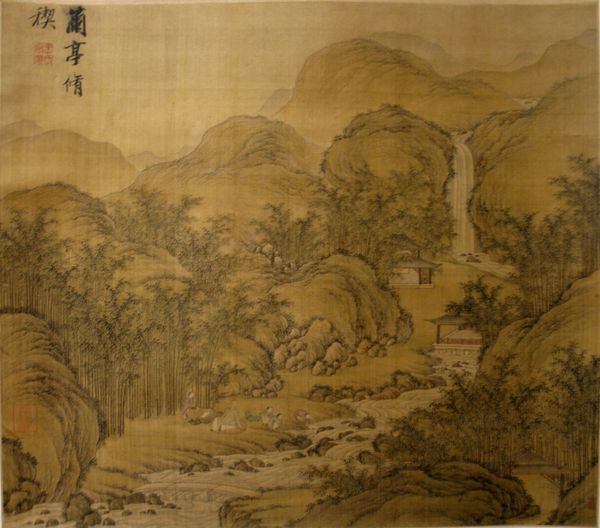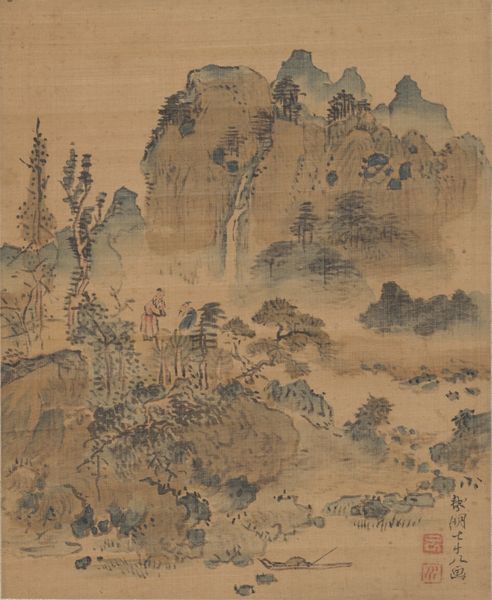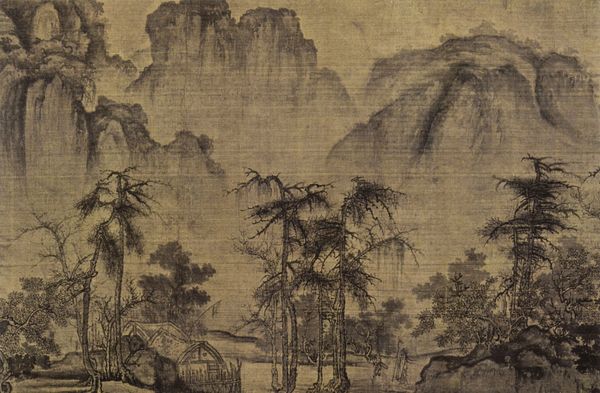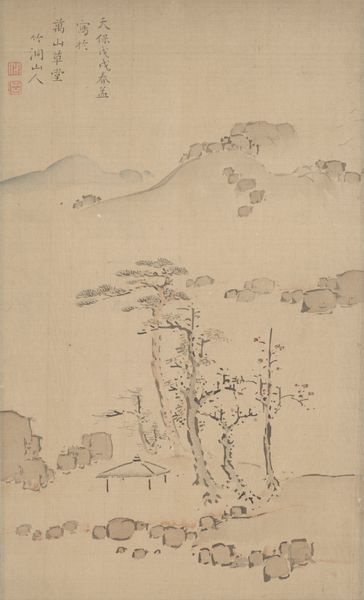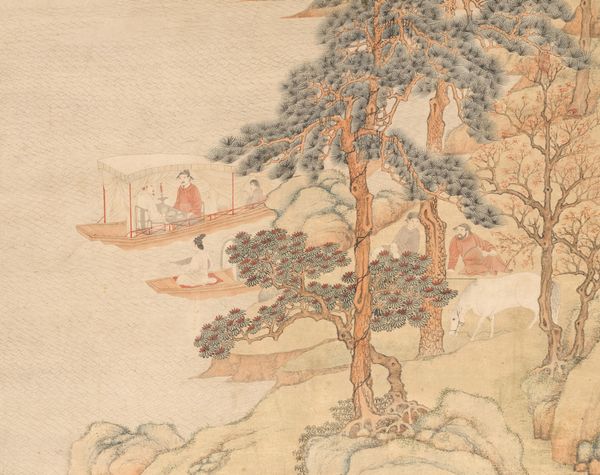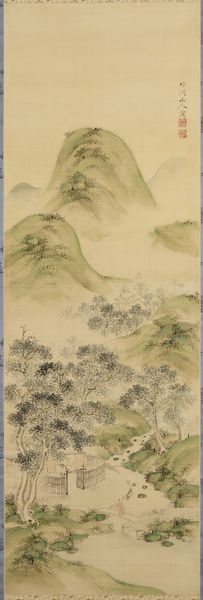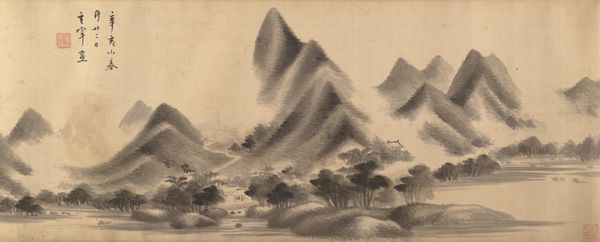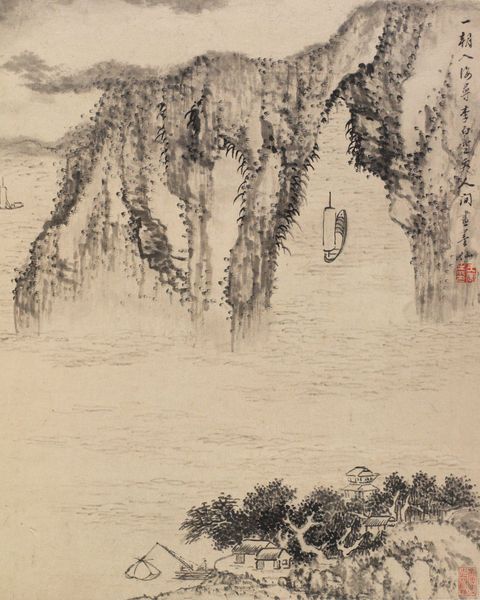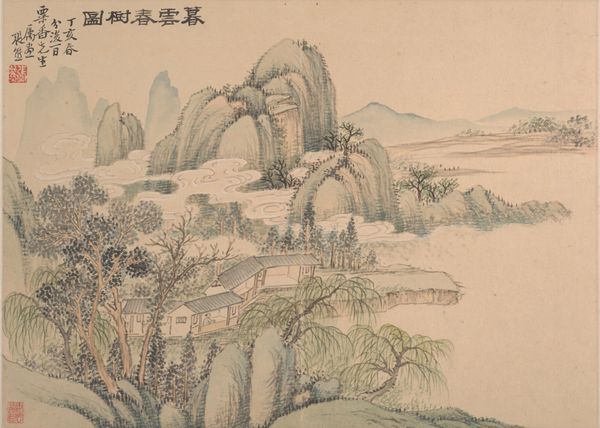
drawing, color-on-silk, watercolor, hanging-scroll, ink
#
drawing
#
blue ink drawing
#
color-on-silk
#
asian-art
#
landscape
#
ukiyo-e
#
japan
#
figuration
#
personal sketchbook
#
watercolor
#
hanging-scroll
#
ink
#
watercolour illustration
#
watercolor
Dimensions: 43 × 17 5/8 in. (109.22 × 44.77 cm) (image)78 1/8 × 23 1/8 in. (198.44 × 58.74 cm) (mount, without roller)
Copyright: Public Domain
Editor: This hanging scroll, "Semimaru," dating from the mid-19th century, was painted by Reizei Tamechika using ink and color on silk. The muted colors give it a rather melancholic feel, like looking at a faded memory. What strikes you most about its composition? Curator: Initially, I am drawn to the rhythmic repetition of forms – the gently undulating hills, echoed by the rounded figures in the foreground, creating a sense of visual harmony. Observe how Tamechika employs varying densities of ink to suggest spatial recession, guiding the eye through the landscape. Editor: I see what you mean. The hills in the distance are lighter and fainter, pushing them back visually. What about the human figures? Curator: The figures serve as formal elements, anchoring the composition and providing a point of human scale within the vastness of nature. The strategic placement of the figures, both inside and outside the structure, create a contrasting tension of interior and exterior. Editor: It’s interesting how they are both part of the landscape and separate from it. Is there a connection with how this contrast influences its interpretation? Curator: Their arrangement calls attention to the very formal qualities of line and shape – the way the curve of a figure echoes the curve of a distant hill, the contrast between the precise lines of the building and the looser rendering of the trees. Editor: So, focusing on the structure first helps reveal how its parts influence one another to create a richer understanding. Curator: Precisely. We move from appreciating the inherent qualities to unlocking profound relationships and symbolic associations imbedded in it.
Comments
No comments
Be the first to comment and join the conversation on the ultimate creative platform.

